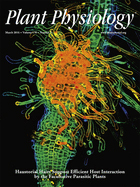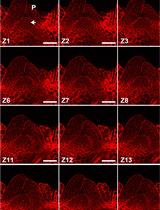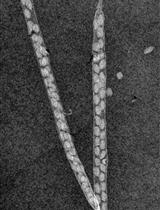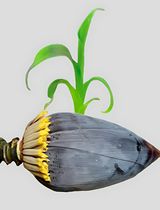- EN - English
- CN - 中文
Comprehensive Methods for Leaf Geometric Morphometric Analyses
叶几何形态的综合分析方法
发布: 2017年05月05日第7卷第9期 DOI: 10.21769/BioProtoc.2269 浏览次数: 15763
评审: Rainer MelzerAnnis Elizabeth RichardsonAnonymous reviewer(s)
Abstract
Leaf morphometrics are used frequently by several disciplines, including taxonomists, systematists, developmental biologists, morphologists, agronomists, and plant breeders to name just a few. Leaf shape is highly variable and can be used for identifying species or genotypes, developmental patterning within and among individuals, assessing plant health, and measuring environmental impacts on plant phenotype. Traditional leaf morphometrics requires hand tools and access to specimens, but modern efforts to digitize botanical collections make digital morphometrics a readily accessible and scientifically rigorous option. Here we provide detailed instructions for performing some of the most informative digital geometric morphometric analyses available: generalized Procrustes analysis, elliptical Fourier analysis, and shape features. This comprehensive procedure for leaf shape analysis is comprised of six main sections: A) scanning of material, B) acquiring landmarks, C) analysis of landmark data, D) isolating leaf outlines, E) analysis of leaf outlines, and F) shape features. This protocol provides a detailed reference for applying landmark and outline analysis to leaf shape as well as describing leaf shape features, thus empowering researchers to perform high throughput phenotyping for diverse applications.
Keywords: Digital leaf morphometrics (数字叶形态测量)Background
There are a variety of approaches to digital leaf shape morphometrics, including outline or Fourier analysis, contour signatures, landmark analysis, shape features, fractal dimensions, and texture analysis (Cope et al., 2012). Among these analyses, landmark and Fourier analysis together perform exceptionally well at distinguishing between groups among leaf shapes (McLellan and Endler, 1998; Hearn, 2009). Landmark analysis is ideal for capturing aspects of shape that are consistent among all leaves within a given dataset. The selection of landmarks should include points that are biologically homologous and adequately represent the morphology of the leaf (see more pointers in Bookstein, 1991 and Zelditch et al., 2004). If leaves in the dataset do not have evolutionarily conserved shape features, ‘pseudo-landmarks’ can instead be placed (Chitwood and Sinha, 2016); that is, landmarks can be placed at equidistant points along the leaf outline relative to homologous points that act as anchors. Landmarks can then be analyzed using Generalized Procrustes Analysis (GPA), which normalizes shape data (annotated by landmarks) at equal scale, allowing for an accurate comparison of shapes regardless of their size. Outline analysis offers a more broadly applicable phenotyping method in that Elliptical Fourier Descriptors (EFDs) are used to build shape descriptors of the leaf outline (Kuhl and Giardina, 1982; Iwata and Ukai, 2002). While sensitive to noise, EFDs are ideal for large leaf datasets that have subtle differences between shapes. Shape features are an additional, simple method of outline analysis that can include the perimeter to area ratio, aspect ratio, and circularity measurements (Cope et al., 2012). In this protocol, we focus on aspect ratio and circularity, as they detect signatures of lobing and serration. Aspect ratio is the ratio of the major axis to the minor axis of a fitted ellipse, in which case values close to ‘1’ are more circular in shape regardless of lobing. Circularity is the ratio of the leaf area to perimeter outline. This measurement is useful for discriminating leaves with lobing and serration, with low circularity values indicating significant lobing and serration. This protocol is designed such that researchers can choose between all three methods (GPA, EFD, and shape features) based on which analyses best fit their data.
Materials and Reagents
- Herbarium specimens and/or fresh leaf material
Equipment
- Computer that can run Microsoft® Windows® XP (or later) and/or Mac® OS X® 10.4 (or later)
- Flatbed photo scanner (Epson Expression, model: 10000XL )
Software
- Adobe® Photoshop® CS4 (or later)
- Epson® Scan Utility v3.4.9.6 (https://support.epson.com/)
- JavaTM (https://java.com/)
- ImageJ (https://imagej.nih.gov/ij/)
- Microsoft® Excel® 2011 (or later)
- SHAPE v1.3 (http://lbm.ab.a.u-tokyo.ac.jp/~iwata/shape/)
SHAPE is built for Windows but if using a Mac, Wine and Winebottler (http://winebottler.kronenberg.org/) are required - R (https://r-project.org/)
Packages: ‘shapes,’ ‘ggplot2,’ ‘devtools,’ ‘ellipse,’ and ‘roxygen2’ - RStudio (https://rstudio.com/products/rstudio/)
RStudio is an optional user interface for R
Procedure
文章信息
版权信息
© 2017 The Authors; exclusive licensee Bio-protocol LLC.
如何引用
Readers should cite both the Bio-protocol article and the original research article where this protocol was used:
- Klein, L. L. and Svoboda, H. T. (2017). Comprehensive Methods for Leaf Geometric Morphometric Analyses. Bio-protocol 7(9): e2269. DOI: 10.21769/BioProtoc.2269.
- Chitwood, D. H., Rundell, S. M., Li, D. Y., Woodford, Q. L., Yu, T. T., Lopez, J. R., Greenblatt, D., Kang, J. and Londo, J. P. (2016). Climate and Developmental Plasticity: Interannual Variability in Grapevine Leaf Morphology. Plant Physiol 170(3): 1480-1491.
分类
植物科学 > 植物发育生物学 > 形态建成
您对这篇实验方法有问题吗?
在此处发布您的问题,我们将邀请本文作者来回答。同时,我们会将您的问题发布到Bio-protocol Exchange,以便寻求社区成员的帮助。
Share
Bluesky
X
Copy link













